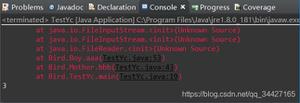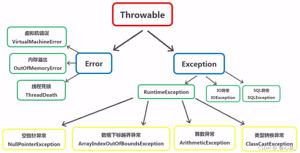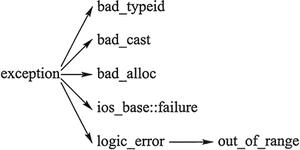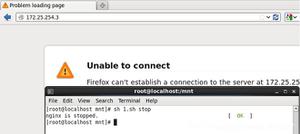Java try catch finally异常处理组合详解
catch" title="try catch">try catch finally组合:检测异常,并传递给catch处理,并在finally中进行资源释放。
try catch组合 : 对代码进行异常检测,并对检测的异常传递给catch处理。对异常进行捕获处理
public class Demo04 {
public static void main(String[] args) {
int [] arr={};
//可能会发生异常的语句
int a=get(arr);//可以点第2个或者第3个
System.out.println(a);
}
public static int get(int[] arr) throws ArrayIndexOutOfBoundsException ,NullPointerException ,Exception {
//若异常有一个定义为Exception,可以单写Exception。因为Exception是所有的父类
if(arr==null){
throw new NullPointerException("数组为空!");
}
if(arr.length==0){
throw new ArrayIndexOutOfBoundsException("数组长度为0!");//都可以写Exception,因为Exception是所有的父类
}
int i=arr[arr.length-1];
return i;
}
}
一个try 多个catch组合 : 对代码进行异常检测,并对检测的异常传递给catch处理。对每种异常信息进行不同的捕获处理。
注意:这种异常处理方式,要求多个catch中的异常不能相同,并且若catch中的多个异常之间有子父类异常的关系,那么子类异常要求在上面的catch处理,父类异常在下面的catch处理。
try finally 组合: 对代码进行异常检测,检测到异常后因为没有catch,所以一样会被默认jvm抛出。异常是没有捕获处理的。但是功能所开启资源需要进行关闭,所有finally。只为关闭资源。(虚拟机处理—结束程序、报错;finally还是执行的)。
运行时期异常:
RuntimeException和他的所有子类异常,都属于运行时期异常。
NullPointerException(空指针),ArrayIndexOutOfBoundsException(数组越界)、ClassCastException(类转换异常)、NumberFormatException(数字格式异常--数字转换异常)、
java.util.ConcurrentModificationException(并发修改异常)、SQLException(sql异常) 等都属于运行时期异常。
运行时期异常的特点:
①、方法中抛出运行时期异常,方法定义中无需throws声明,调用者也无需处理此异常;
②、运行时期异常一旦发生,需要程序人员修改源代码。
异常在方法重写中的细节:
1、子类覆盖父类方法时,如果父类的方法声明异常,子类只能声明父类异常或者该异常的子类,或者不声明。
2、 当父类方法声明多个异常时,子类覆盖时只能声明多个异常的子集。
3、当被覆盖的方法没有异常声明时,子类覆盖时无法声明异常的。
问题:接口中没有声明异常,而实现的子类覆盖方法时发生了异常,怎么办?
答:无法进行throws声明,只能catch的捕获。万一问题处理不了呢?catch中继续throw抛出,但是只能将异常转换成RuntimeException子类抛出。
异常中常用的方法:
1、getMessage方法:返回该异常的详细信息字符串,即异常提示信息。
2、toString方法:返回该异常的名称与详细信息字符串。
3、printStackTrace:在(红字的方式)控制台输出该异常的名称与详细信息字符串、异常出现的代码位置。
package com.oracle.demo01;
public class Demo06 {
public static void main(String[] args) throws Exception{
int [] arr={};
try{
//可能会发生异常的语句
int a=get(arr);
System.out.println(a);
}catch(Exception ex){//若存在父类Exception,必须写在最后面
//getMessage()只打印异常信息
//System.out.println(ex.getMessage());
//toString()打印异常对象和异常信息
//System.out.println(ex.toString());
//以红字的方式打印异常对象、信息、位置
ex.printStackTrace();
}finally{
//不管发不发生异常都会执行的语句
System.out.println("finally执行了。");
}
System.out.println("程序没有结束!");
}
public static int get(int[] arr) throws ArrayIndexOutOfBoundsException ,NullPointerException {
//若异常有一个定义为Exception,可以单写Exception。因为Exception是所有的父类
if(arr==null){
throw new NullPointerException("数组为空!");
}
if(arr.length==0){
throw new ArrayIndexOutOfBoundsException("数组长度为0!");//都可以写Exception,因为Exception是所有的父类
}
int i=arr[arr.length-1];
return i;
}
}
以上是 Java try catch finally异常处理组合详解 的全部内容, 来源链接: utcz.com/z/323242.html









